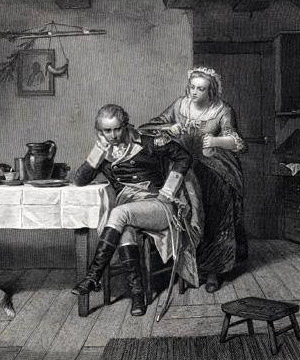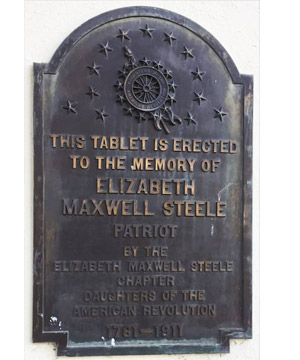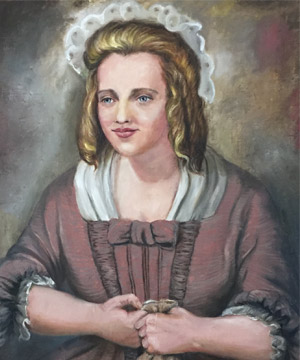About Us
History
The Elizabeth Maxwell Steele Chapter, NSDAR, was organized on November 22, 1898 and was chartered on December 29, 1898. We are the second oldest chapter in North Carolina! Our chapter is named in honor of Rowan County American Revolutionary War Patriot, Elizabeth Maxwell Steele (1733–1791). She generously aided the revolutionary cause. See her story below.
Since 1898 we have been honored to serve the community and have been dedicated to the National Society Daughters of the American Revolution’s goals of promoting patriotism, preserving American and local history, and securing America’s future through better education for children.

Portrays Elizabeth Maxwell Steele in her tavern, offering General Nathanael Greene breakfast and two bags of gold. Engraving by Thomas Phillibrown, Public domain, via Wikimedia Commons.

Memorial plaque honoring Elizabeth Maxwell Steele.

Portrait owned by the Elizabeth Maxwell Steele Chapter, NSDAR, on display in the DAR Room at the Rowan Museum, Salisbury, North Carolina.
Elizabeth Maxwell Steele
Elizabeth Maxwell Steele’s patriotic service is well documented, and partially described by Doctor Joseph Read, surgeon of the army, who was there with General Nathanael Greene. This passage is from the book Makers of America: Biographies of Leading Men of Thought and Action, Volume II.
